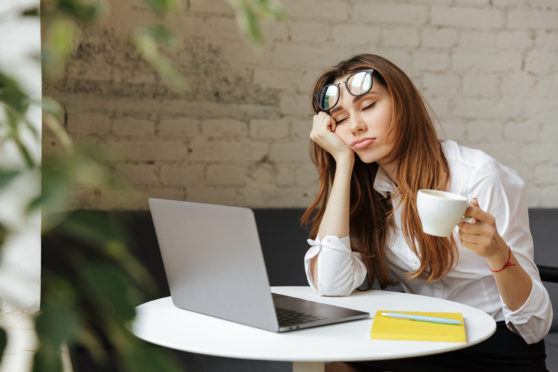
If you’re spending lockdown feeling groggy and exhausted, rest assured you’re not alone.
Whether we’re juggling home-schooling with a demanding day job, or straining our eyes by staring at Zoom meetings on a tiny screen for hours on end, it’s no surprise that the health crisis is wreaking havoc with our sleep cycles.
But, according to experts, there are some easy ways to gain a good night’s sleep during these hectic, scary and confusing times.
One simple yet effective solution is an afternoon power nap, especially for home workers suffering burnout. With our lives in flux and the boundaries between domestic life and the office blurred like never before, an overwhelming feeling of tiredness can slow our concentration and productivity.
When energy levels dip mid-afternoon, Cara Moore, CEO and founder of ProNappers, suggests ditching caffeine and instead powering down for a quick 40 winks.
“A power nap can help to alleviate anxiety because our cortisol and adrenaline levels are lowered on waking,” says Cara. “As well as feeling refreshed and revitalised afterwards, taking a nap also improves your focus and concentration, which many home workers struggle with.
“It can also lift your mood as we tend to feel more positive and optimistic when we are well rested.”
Cara, a self-proclaimed “naptivist”, has long campaigned for napping to be normalised in the workplace.
“ The optimal nap time is 1pm to 3pm and never more than 20 minutes. If you are working and living in a crowded space, going off on your own to your bedroom or sitting in a chair, popping on an eye mask and listening to soothing music is the ultimate gift of self- care.”
Lisa Gargarro, an Edinburgh-based sleep consultant, agrees.
“Some people may find it productive to have a short power nap when they feel themselves lagging and feeling sleepy,” says Lisa. “This is something most of us experience after lunchtime and a short nap can ease the sleep pressure created by a serotonin increase after we consume food.”
Yet a decent night’s sleep has become as precious and rare a commodity as antibacterial hand gel since lockdown measures were imposed. “Increased stress and anxiety is causing cortisol levels in our bodies to spike,” explains Lisa.
“Heightened cortisol levels means it’s harder for our bodies to produce melatonin, the chemical our bodies need for sleep to occur. We reduce cortisol by producing serotonin, the happy hormone, when we do things that make us happy, such as exercise, socialising or holidays. But when the ability to follow these normal behaviours is severely restricted, our sleep suffers.”
Be it concerns over job security, the safety of our loved ones, or uncertainty about what lies ahead, we all have plenty to be losing sleep over. Dr Renata Riha, of the department of sleep medicine at the Royal Infirmary of Edinburgh, leads a team conducting a survey which aims to gauge the impact of Covid-19 on sleep patterns.She outlined other lifestyle changes which could improve our sleep.
“Get up and retire at roughly the same time every day. Get out at least once a day to stretch and exercise in the fresh air and expose yourself to sunlight, even if it’s cloudy.
“Limit your intake of alcohol, caffeine, cigarettes and try to eat as healthily as possible. Reduce screen time in the evenings and stop all screen use at least one hour before bedtime.”
To complete the Department of Sleep Medicine sleep survey, click here.

Enjoy the convenience of having The Sunday Post delivered as a digital ePaper straight to your smartphone, tablet or computer.
Subscribe for only £5.49 a month and enjoy all the benefits of the printed paper as a digital replica.
Subscribe